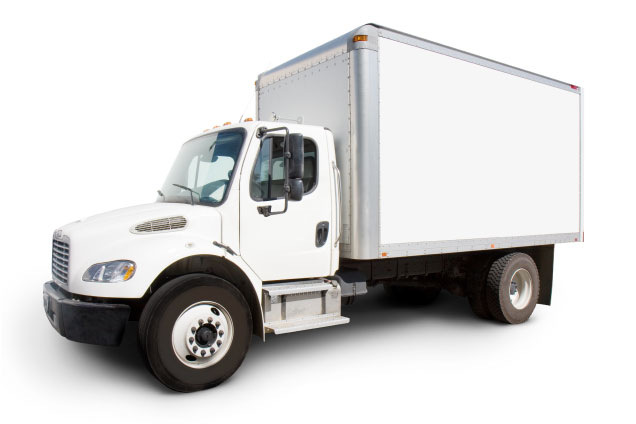Guide to Expertly Storing Your Freezer for Maximum Longevity
Posted on 16/06/2025
Guide to Expertly Storing Your Freezer for Maximum Longevity
A well-organized and expertly stored freezer is critical for maximizing food preservation, minimizing waste, and saving money. Whether you're stocking up after a grocery haul or planning for emergencies, mastering proper freezer organization and storage techniques ensures that your food remains fresh, delicious, and safe for the longest time possible. In this all-inclusive guide, you'll discover professional tips and proven methods for effectively storing your freezer and extending the longevity of both your appliance and its contents.
Why Proper Freezer Storage Matters
Improper freezer storage leads not only to food spoilage and flavor loss but also to energy inefficiency and frustration. A cluttered or poorly maintained freezer tends to cause freezer burn, forgotten items, and difficulty finding what you need. By following best practices, you'll enjoy:
- Increased food lifespan and safety
- Reduced waste and more organized meals
- Better energy efficiency from your freezer
- Improved taste and texture of frozen goods

Preparing for Expert Freezer Storage
Step 1: Clean and Declutter
Before you begin storing for maximum freezer longevity, empty your freezer completely and clean all surfaces with warm, soapy water. Remove any expired or poorly wrapped items, and wipe away spilled liquids or ice buildup. A fresh start prevents unwanted odors, stains, and frost accumulation, which can all impact the quality of your frozen foods.
Step 2: Take Inventory
Write down the items you currently have in your freezer or use an app to help you track your inventory. Knowing what's on hand prevents you from buying duplicative items and helps you rotate food before it expires.
Choosing the Right Freezer Storage Containers
How you package your freezer items is just as important as what you store. The best containers for freezer longevity are:
- Freezer-safe bags: Thicker than regular plastic, these seal tightly and are ideal for flat freezing.
- Heavy-duty plastic containers: Specifically designed for freezer temperatures; choose air-tight models when possible.
- Vacuum-sealed bags: Perfect for removing air (the enemy of frozen food quality).
- Aluminum foil and freezer paper: Great for wrapping meats and baked goods with an added layer of protection.
- Glass jars or containers: Only if designed for freezing (avoid overfilling to prevent glass breakage as liquids expand).
Tips for Freezer Packing Materials
- Label every package with contents and date.
- Remove as much air as possible before sealing.
- Use portion-sized packages for faster freezing and easy meal planning.
- Avoid reusing non-freezer-grade containers, as they often crack or permit freezer odors into your food.
Best Foods for Freezer Storage Longevity
Not all foods freeze equally well. For best results in long-term freezer storage:
- Meats & poultry: Freeze in air-tight wrap for up to 12 months.
- Seafood: Use within 3-6 months for best taste and texture.
- Vegetables: Blanch before freezing; lasts 8-12 months.
- Fruits: Use sugar packs or syrup to prevent oxidation, up to 12 months.
- Baked goods: Double wrap for 3-6 months storage.
- Soups & stews: Store in portioned containers, last 2-3 months.
Foods NOT Recommended for Freezing
- High-moisture produce: Lettuce, cucumbers, and raw potatoes become mushy.
- Eggs in shell: Can crack and become unsafe.
- Soft cheeses: Texture and taste degrade.
- Fried foods: Lose their crispiness.
Arranging and Organizing Your Freezer for Maximum Longevity
Organization is key to expertly storing your freezer for both longevity and ease of use. Here are expert strategies:
1. Use Zones or Sections
Designate different areas of your freezer for specific types of items. For example:
- Upper shelves: Items used most frequently (e.g., bread, frozen fruit, ice cream).
- Lower shelves: Heaviest and bulkier items like meats.
- Door shelves: Least temperature-stable, ideal for nuts, spirits, and quick-access foods.
2. Practice First In, First Out (FIFO)
Always store newer items behind or beneath older items. This ensures that food is rotated and nothing expires before you use it.
3. Stack Smartly
Flat-packing food in freezer bags helps you maximize space and reduce wasted freezer air pockets. Stacked, uniform bags freeze faster and are easier to rearrange.
4. Baskets and Bins
Use labeled baskets or freezer-safe bins to group similar items, such as breakfast, dinner ingredients, or snacks. This prevents digging and helps maintain low temperatures.
Preventing Freezer Burn and Quality Loss
Freezer burn is one of the most common causes of flavor and texture decline in frozen foods. To extend freezer longevity and keep food delicious:
- Wrap food tightly: Prevent air exposure.
- Double bag if needed: For longer storage or high-moisture foods.
- Use vacuum sealer: Especially for meats, seafood, and long-term storage.
- Don't overload: Overfilling the freezer reduces air circulation and can hinder freezing performance.
- Don't underfill: Freezers work better when roughly 75-85% full.
Labelling and Tracking for Ultimate Freezer Organization
Labelling is essential for a well-managed freezer. Always include:
- Exact contents: Be specific - write "Beef Stew" instead of just "Stew".
- Date frozen: Helps you judge how long you've had it.
- Portion size or weight: Useful for recipes and meal planning.
- 'Use by' or 'Best by' date: For foods expected to be in long-term storage.
Consider keeping a freezer inventory sheet on the door or using a digital app to track when items go in and out. This step ensures nothing is wasted and your freezer stays organized.
Temperature Tips: Keeping Your Freezer Efficient
Maintain your freezer at 0?F (-18?C) or lower. This temperature prevents bacterial growth and retains food quality for the maximum length of time. To check your freezer's performance:
- Use an appliance thermometer to periodically check accuracy.
- Keep the freezer door closed as much as possible; fluctuations can cause frost buildup and inconsistent freezing.
- Regularly defrost manual defrost freezers to avoid ice buildup.
Energy Efficiency and Longevity
- Keep your freezer about 75-85% full for optimal operation; if your freezer is too empty, fill jugs of water to help stabilize temperature.
- Place the freezer in a cool, low-humidity room, away from direct sunlight or heat sources.
- Vacuum coils and clean vents on a regular basis to extend the appliance's lifespan.
How Long Do Foods Last in the Freezer? Storage Timeline Chart
Here's a quick-reference freezer storage timeline chart for commonly frozen foods:
| Food Item | Maximum Freezer Storage Time |
|---|---|
| Uncooked Beef & Lamb | 12 months |
| Poultry (whole) | 12 months |
| Fish (fatty) | 2-3 months |
| Fish (lean) | 6 months |
| Cooked Meat & Poultry | 2-6 months |
| Baked Goods | 2-3 months |
| Frozen Vegetables | 8-12 months |
| Fruits | 8-12 months |
| Soups & Stews | 2-3 months |
| Bacon & Sausage | 1-2 months |
| Bread | 2-3 months |
Note: Freezing does not kill bacteria but halts their growth. Once thawed, foods should be handled and consumed quickly.
Defrosting Safely and Maintaining Quality
Proper defrosting is essential for both safety and preserving the taste and texture of frozen foods. The safest methods are:
- Refrigerator thawing: Place foods in the refrigerator for several hours or overnight. Best for meats and casseroles.
- Cold water thawing: Submerge sealed foods in cold water, changing water every 30 minutes.
- Microwave thawing: Use this only when food will be cooked immediately, as uneven thawing can encourage bacteria.
Avoid thawing at room temperature, which can lead to bacterial growth at the surface of the food.
Frequently Asked Questions About Freezer Longevity
How often should I clean out my freezer?
Aim for a full clean and inventory check at least every 3-4 months. Toss expired items and rearrange as needed for optimal organization.
Is it safe to refreeze food that's been thawed?
If your food has thawed but still contains ice crystals or is colder than 40?F (4?C), it can be safely refrozen. However, expect reduced texture and quality, especially for fruits, vegetables, and meats. Do not refreeze any food that's been left at room temperature for more than two hours.
Can you extend freezer life with a vacuum sealer?
Yes! Vacuum-sealed foods last significantly longer and retain better flavor and texture. This is especially beneficial for bulk meats, fruits, and vegetables.
How do I eliminate freezer odors?
Clean spills promptly and keep an open box of baking soda inside to absorb odors. Double wrapping strong-smelling foods (like fish) also helps.
Does the type of freezer matter for storage longevity?
Chest freezers typically maintain temperatures better and use less energy, making them ideal for long-term storage. Upright freezers offer easier organization but may fluctuate in temperature more frequently.

Conclusion: Mastering Your Freezer for Maximum Longevity
By implementing these expert freezer storage tips--from choosing the right containers, to organizing and labelling food effectively--you'll ensure that your frozen goods last longer, taste better, and remain safe to eat. Remember that a well-maintained, thoughtfully stocked freezer is a true kitchen asset, saving time, money, and effort year-round.
Now that you have the ultimate guide to expertly storing your freezer for maximum longevity, put these strategies to work. You'll enjoy fresher meals, fewer trips to the store, and peace of mind knowing your freezer is up to the task!
Related Resources
- USDA Freezing and Food Safety Guidelines
- Academy of Nutrition and Dietetics: Freezer Storage Tips
- Consumer Reports Freezer Buying Guide
Expertly storing your freezer is a science and an art--master it for maximum longevity, flavor, and efficiency!




